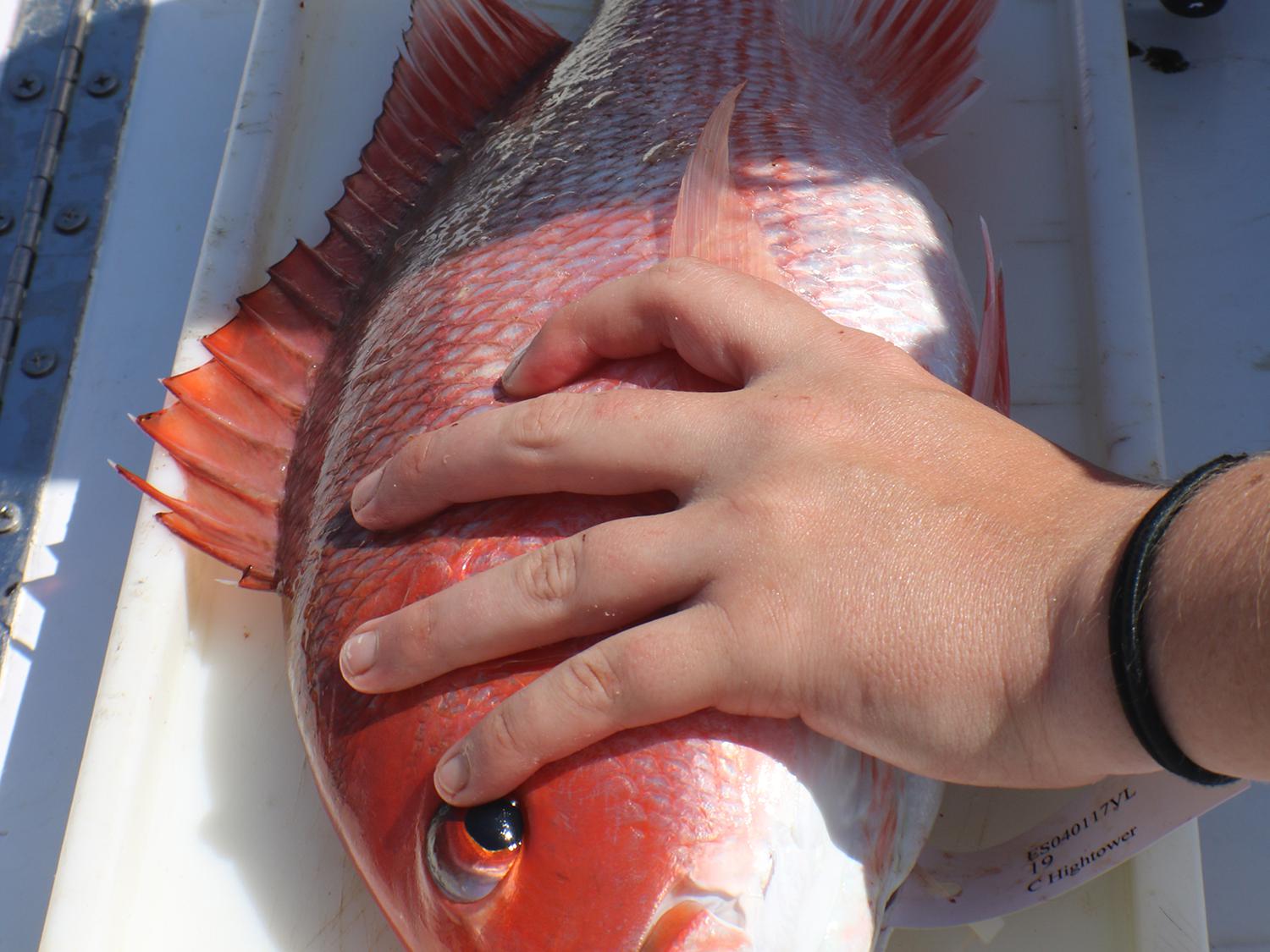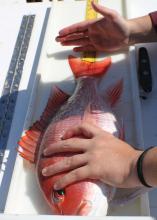Information Possibly Outdated
The information presented on this page was originally released on August 3, 2018. It may not be outdated, but please search our site for more current information. If you plan to quote or reference this information in a publication, please check with the Extension specialist or author before proceeding.
Multistate effort assesses the Gulf’s red snapper

BILOXI, Miss. -- Scientists have embarked on a colossal research project to estimate the abundance of red snapper, the most sought-after offshore fish in the U.S. controlled waters in the Gulf of Mexico.
Red snapper are important for economic and cultural reasons. Unfortunately, fishing trends over the past 150 years have greatly reduced populations, and the stock is currently under a rebuilding plan.
As the population continues to show signs of recovery, anglers are seeing more, and larger, red snapper. Anglers might think the snapper population has recovered, but the stock is not yet rebuilt because it does not contain enough reproductively active females. This discrepancy has caused widespread frustration among anglers.
Hearing the frustration from their constituents, lawmakers took action. Congress made funding available in 2016 to estimate independently the red snapper population size in the Gulf of Mexico. The Mississippi-Alabama Sea Grant awarded a total of $10 million for a two-year project (2017–2019) known as the Great Red Snapper Count.
The goal of this project is to estimate the total number of red snapper in the Gulf. Biologists will conduct this evaluation separately from the assessment process used by federal managers with the National Oceanic and Atmospheric Administration Fisheries. They will use several research methods, including habitat classification, direct visual counts, depletion surveys and a high-reward tagging study.
Upon completion of the project, legislators and fishery managers will review the abundance estimate and use it to make more informed management decisions. In this way, the Great Red Snapper Count will provide new insight into the Gulf of Mexico red snapper population, while also helping to calibrate the current stock assessment and provide maximum fishery access for all sectors.
In addition to scientists from Mississippi State University and the University of Southern Mississippi, the Great Red Snapper Count team includes biologists and researchers from Auburn University, University of South Alabama, University of Florida, University of South Florida, Florida International University, Louisiana State University, Southern Methodist University, Louisiana Department of Wildlife and Fisheries, Virginia Institute of Marine Science, and Texas A&M University campuses in Corpus Christi and Galveston.
For more information on the project, visit The Great Red Snapper Count web page. (http://bit.ly/2MdEIvM)

Editor’s Note: Extension Outdoors is a column authored by several different experts in the Mississippi State University Extension Service.






